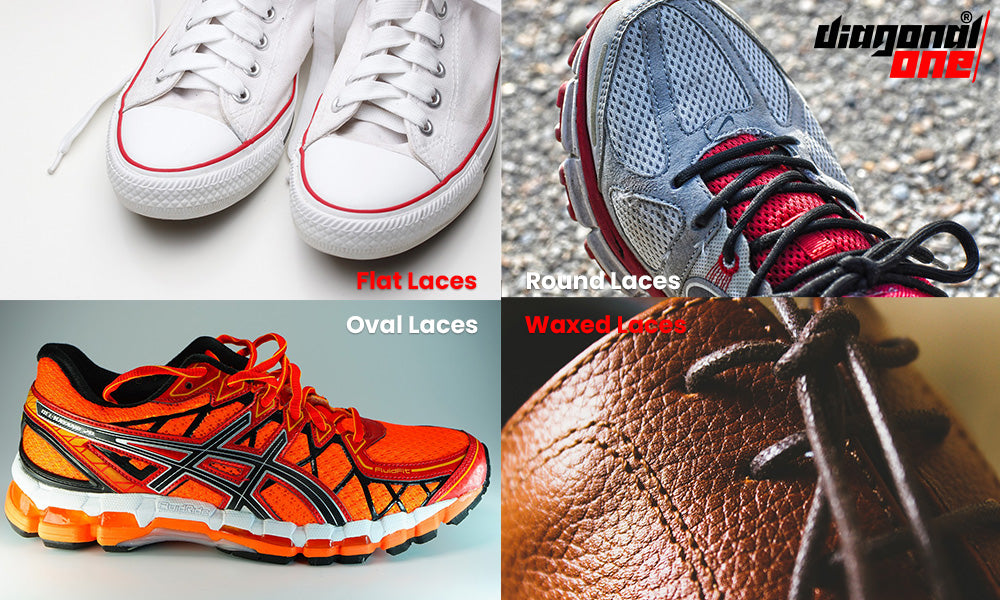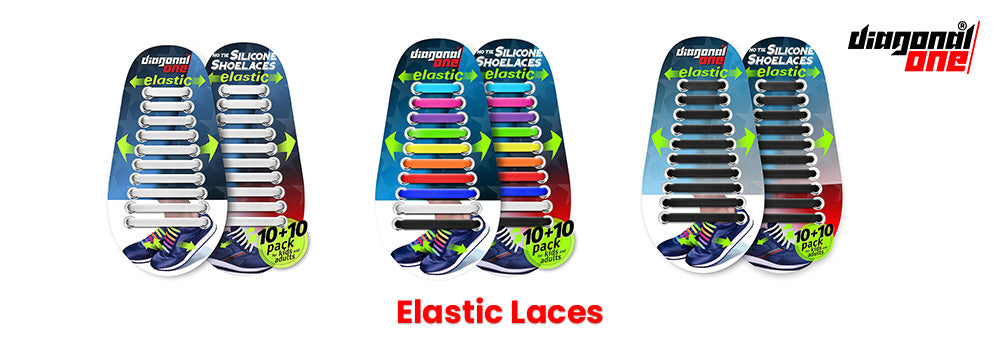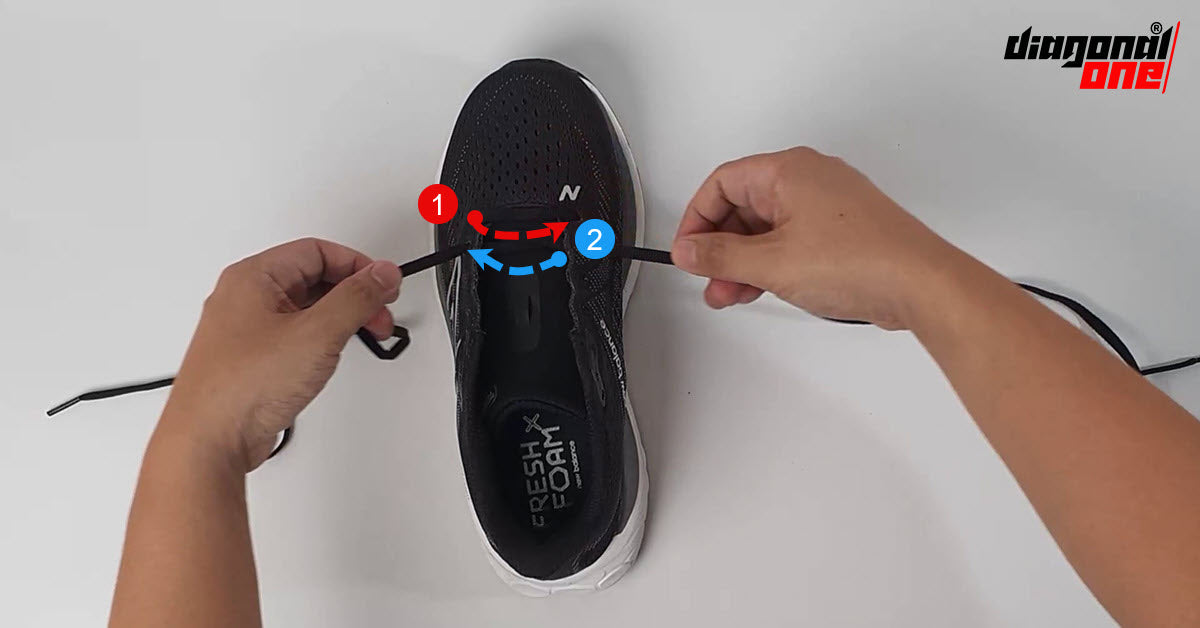There comes a time when you have to replace your shoe laces. Let's take a look at some of the reasons why you'd want to get replacement laces and how to go about doing it.
Common Reasons to Replace Shoelaces
Replacing your shoe laces can be because of these reasons:
Wear and Tear: Like all things, shoe laces wear out over time. Replacing your shoe laces becomes necessary when you notice them starting to fray or break. Or, if they're really dirty. Stains on white laces are tough to take out. Frayed and worn laces can also be hard to tie.
Looks and Style: You might also want to replace your shoelaces for style or aesthetic purposes. The stock laces might be too drab for the style you're going for. You might want to try out different colors that would go well with your shoes. Changing shoe laces can be a quick and easy way to change the look of your shoes.
Purpose and Performance: There's also the performance consideration. If you're into sports, outdoor activities, or even work, shoelaces that get untied easily or fail to bring comfort and security can mean all the difference between winning or losing.
Regardless of reason, finding the right replacement laces can make a big difference in how well they fit and how comfortable they are.
Choosing the Right Replacement Laces
To find the ideal replacement for your shoe laces, you need to understand the different types of shoelaces available on the market. Your choice will depend on your specific needs, style preferences, and the type of shoes you have.
Types of Shoe Laces
There are four main types of shoe laces: flat laces, round laces, oval laces, waxed laces, and elastic laces. Each type has its unique characteristics and is suited to different kinds of footwear.

Flat Laces: As the name suggests, these laces have a flat cross-section. They are commonly found in casual shoes and sneakers due to their comfortable feel and easy-to-tie nature.
Round Laces: Round laces, with their tubular shape, are often used in formal shoes, boots, and some running shoes. They look sleek, hence, their use on dress shoes. They also last longer due to denser and more rigid construction.
Oval Laces: A combination of the structure of flat and round laces. These are often used in outdoor and athletic shoes. They offer a comfortable feel. They also don't get untied easily compared to round laces.
Waxed Laces: These are essentially round or flat laces that have been treated with wax. The coating provides extra durability, water resistance, and grip. They're ideal for dress shoes or outdoor footwear like hiking boots
Elastic Laces: Also known as no-tie or speed laces, these are made from elastic materials that allow you to slip your foot into your shoe without having to tie or untie them each time. They're convenient to use, allowing you to slip your shoes on and off quickly. They're ideal for kids' shoes or athletic footwear

Factors to Consider When Choosing Replacement Laces
When you're in the market for new laces, there are a few things you should keep in mind to make sure you get the right ones.
Here are some factors to consider:
Type: Consider the type of lace that originally came with your shoe. Some shoes would only take on a lace of a particular type due to its construction.
Purpose: What shoes are you using them on and for what purpose are your shoes. If you're looking into using a particular lacing pattern, know that this also factors into the length needed to achieve your desired style.
Length and Width: The size and style of your shoes will determine what length and width of laces you need. For example, running shoes usually require longer and thinner laces, while boots may need shorter and thicker ones.
Material: The material of the laces can affect their durability and how well they hold up over time. Cotton laces are comfortable but not as strong as nylon or polyester laces, which are more resistant to wear and tear. New materials like silicone are now also available and are commonly found on no-tie laces.
Color and Design: The color and design of the laces can add a touch of personal style to your shoes. You might want to choose a color that matches or complements the overall look of your footwear. Additionally, you can consider whether you want a plain lace or one with an interesting pattern or texture.
By keeping these factors in mind, you'll be able to find replacement laces that not only work well with your shoes but also enhance their appearance.
Removing Old Laces
To maintain the neat look and longevity of your shoes, removing old laces carefully is a critical step. Follow this simple guide:
1 - Untie Your Laces: Begin by loosening the laces on your shoes. This can usually be accomplished by simply pulling on the loose ends of each lace.
2 - Free the Ends: Look for the aglets (the plastic or metal tips at the end of your laces). Once located, gently pull until they are free from the eyelets.
3 - Pull Out the Lace: Start from the topmost eyelets and pull each lace out one at a time. Make sure to do this gently to avoid any damage to your shoes.
4 - Repeat on Other Shoe: Follow the same steps for your other shoe.
By following these steps, you will have successfully removed your old laces, paving the way for a fresh pair. This process is just as important as choosing and replacing laces since it ensures that your shoes remain in good condition throughout their lifespan.
Replacing Your Shoe Laces

Once you've removed the old laces, it's time to put in the new ones. Here's a step-by-step guide to help you out:
1 - Start at the Bottom: Thread your replacement shoe laces through the bottom two eyelets. Make sure both ends are the same length.
2 - Crisscross Pattern: Most shoes look best with a crisscross lacing pattern. To do this, take one end of the lace and thread it through the second eyelet on the opposite side. Do the same with the other end.
3 - Continue Until The Top: Keep going with this crisscross pattern until you've gone through all the eyelets.
4 - Finish Off: When you reach the top, tie your shoe laces in a bow or knot that you prefer.
Here's a more detailed guide to lacing your shoes.
Lacing Tips
Now that you know how to replace your shoe laces, let's go over some tips for lacing them correctly:
Avoid Twisting: Make sure your shoe laces are flat and not twisted while putting them through the eyelets. This not only looks better but also prevents damage.
Loosen or Tighten as Needed: Your shoes should fit comfortably but not too tight. Adjust the tightness by loosening or tightening each crossover of lace.
Use Both Hands: It's easier to handle your shoe laces if you use both hands when threading and tying them. This helps create a secure and neat finish.
Remember, it might take a few tries to get your shoe laces just right, so be patient. Once you get the hang of it, you'll see a big difference in how your shoes feel and look.
Where to Find High-Quality Replacement Laces

So where could you find the best sources for high-quality replacement laces? You can check out these options:
Local Shoe Stores
One of the most convenient ways to find replacement laces is at local shoe stores. Not only do these stores stock a variety of laces suitable for various types of shoes, they also provide you with the opportunity to assess the quality and texture of the laces in person. Be sure to check out both small independent boutiques and larger chain stores - each tends to offer a unique selection.
Online Retailers
Buying shoelaces online is quick and easy. The internet offers an almost limitless range of options for shoe lace replacement. Merchants on websites such as Amazon, eBay, or Zappos do carry shoelaces and have a vast array of choices in terms of material, color, and length. Online shopping provides the convenience of comparing prices and reading reviews from other customers about their experience with the product.
Specialty Shoelace Brands
For those looking for something truly unique or specific or even premium laces, specialty shoelace brands might be the way to go. Here at Diagonal One, we offer innovative and high-quality no-tie laces and elastic shoe laces.
Caring for Your New Shoe Laces
When it comes to cleaning your laces, gentle hand washing or using a mild detergent is recommended. Avoid machine washing or harsh chemicals, as these can damage the fabric. Additionally, when tying your laces, be mindful of not pulling them too tightly, as this can cause unnecessary strain and lead to fraying over time.
Keep an eye on the condition of your laces and replace them promptly if you notice any signs of wear or damage. By following these simple steps, you can ensure that your laces remain in good shape and continue to enhance the overall look and functionality of your shoes.
If you're a sneakerhead, you're probably one of those who want to get early access to limited drops. Try getting new replacement laces for your new shoes as soon as you get them. You can even keep the original ones in their mint condition.
Conclusion
A shoe lace replacement is an important part of taking care of your shoes. Choosing the right replacement laces can make your shoes more comfortable, fit better, and look better too.
Here are some tips to help you with your shoe lace replacement:
Choose laces that match your shoes: Consider the type of shoe you have, the color you prefer, the material of the laces, and any special designs or patterns. This will help you find laces that go well with your shoes and also work well.
Take care of your laces: To make sure your new laces last as long as possible, it's important to take good care of them. This includes cleaning them regularly, being gentle when tying them, and replacing them when they start to wear out.
Remember, a good pair of laces can make a big difference in how your shoes look and feel. So choose wisely and take care of them!

